Prior to the COVID-19 pandemic, the incidence of adolescent type 1 diabetes was steadily increasing at a rate of 1.9% per year in the United States and 3-4% per year in European countries (3,7). Since the pandemic, however, several studies have reported an unprecedented surge in type 1 diabetes in children and teenagers.
Continue reading “COVID-19 and Type 1 Diabetes: Exploring the Potential Link”Reviewing the Importance of circRNA
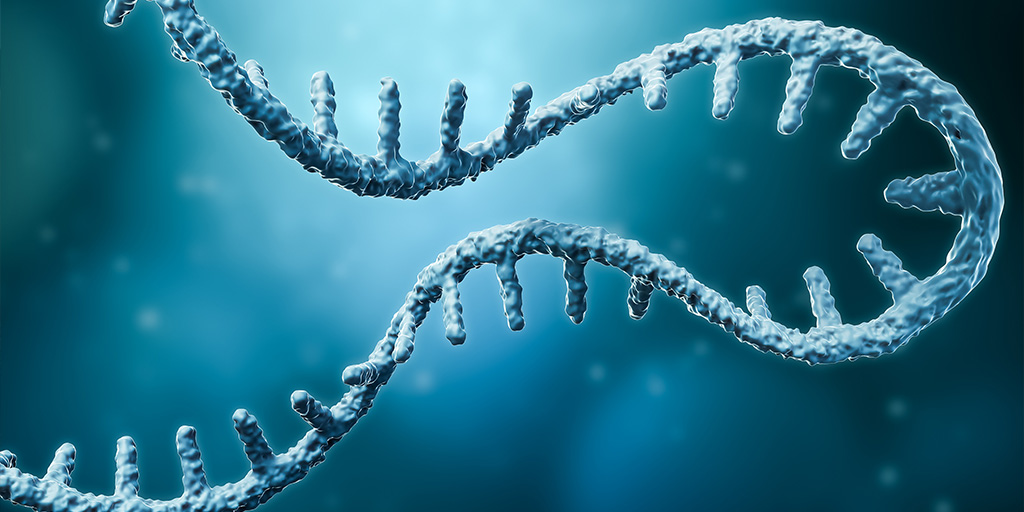
In recent years following the COVID-19 pandemic, RNA has gained attention for its successes and potential use in vaccines and therapeutics. One avenue of interest in RNA research is a non-coding class of RNA first identified almost 50 years ago, circular RNA (circRNA).
In 1976, Sanger et al. first identified circRNA in plant viroids, and later additions to the field found them in mice, humans, nematodes, and other groups. Unlike linear RNA, circRNA are covalently closed loops that don’t have a 5′ cap or 3′ polyadenylated tail. Following its discovery, researchers thought circRNA was the product of a rare splicing event caused by an error in mRNA formation leading to low interest in researching the subject (1).
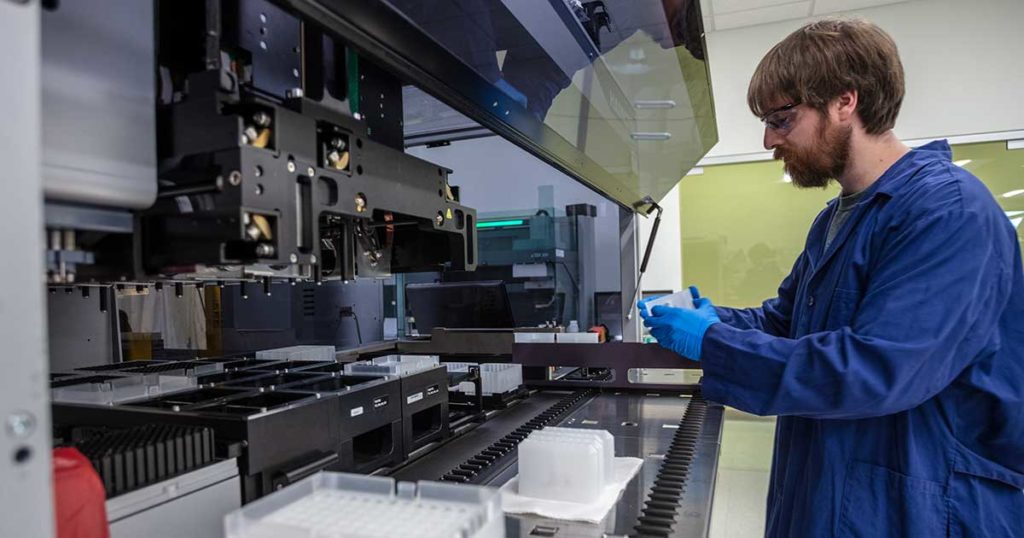
In the early 2010s, following the development of high throughput RNA sequencing technology, Salzman et al. determined that circRNAs were not a result of misplicing, but a stable, conserved, and widely sourced form of RNA with biological importance. Since noncoding RNA makes up the majority of the transcriptome it’s an incredibly important field of study. We now recognize circRNAs for their potential as disease biomarkers and importance in researching human disease (2).
Continue reading “Reviewing the Importance of circRNA”Can AI Help You Develop a Research Proposal?
Integrating artificial intelligence (AI) into the process of scientific research offers a wealth of efficiency-boosting tools that are transforming the ways scientists can approach their work. Many are already using AI to refine code, automate data processing, and edit papers, presentations, abstracts and more. Personally, I find generative language models like ChatGPT to be invaluable “editorial assistants” in my work as a science writer, helping me work through wonky sentence structures, be more concise and get over writer’s block, to name a few applications.

But a scientist’s work doesn’t only involve writing or analyzing data, making presentations or keeping up with the literature. An essential component of any research scientist’s skillset is their ability to develop entirely new ideas and novel research proposals. Coming up with research questions and plans is a central component of graduate education and research careers, both in academia and industry.
As AI continues to advance and find broader use, a critical question arises: Can AI play a pivotal role in the creative process of developing entirely new ideas, such as crafting novel research proposals?
Continue reading “Can AI Help You Develop a Research Proposal?”Small RNA Transfection: How Small Players Can Make a Big Impact
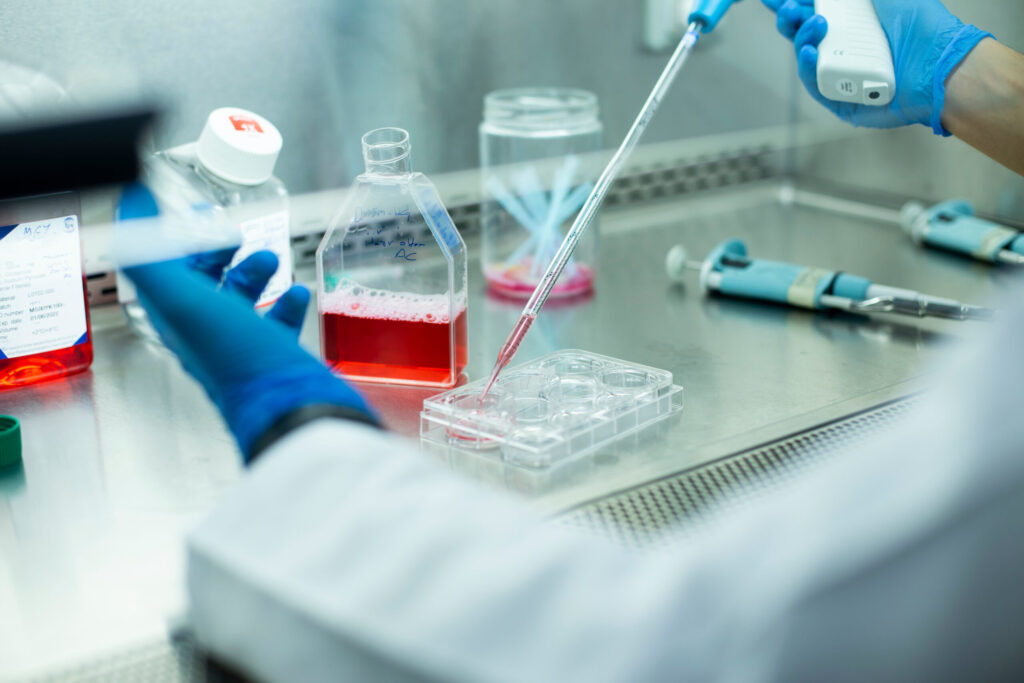
When looking at small aspects of living things, especially cells, it can often be difficult to fully grasp the magnitude of regulation employed within them. We first learn the central dogma in high school biology. This is the core concept that DNA makes RNA and RNA makes protein. Despite this early education, it can be lost on many the biological methods that are employed to regulate this process. This regulation is very important when one considers the disastrous things that can occur when this process goes askew, such as cancer, or dysregulated cell death. Therefor it is very important to understand how these regulatory mechanisms work and employ tools to better understand them.
Continue reading “Small RNA Transfection: How Small Players Can Make a Big Impact”For Frogs, Surviving the Heat Could Come Down to What Is in Their Gut

Amphibians are the most threatened vertebrate class worldwide. Because they lack the ability to regulate their own temperature and moisture levels, climate change is playing a significant role in this growing peril (1). Climate change impacts amphibian survival in several ways. In addition to habitat loss, growing drought conditions make maintaining body moisture levels challenging and warming temperatures restrict activity periods needed for reproduction as well as increasing the risk of heat stress.
Heat tolerance varies by species, and understanding what influences these differences could help predict species survival. The gut microbiota is known to affect a wide range of functions in host animals, and recently studies have begun to investigate its role in host thermal tolerance (2).
Continue reading “For Frogs, Surviving the Heat Could Come Down to What Is in Their Gut”Treating Solid Tumors: Combining CAR-T Cell Therapy with Probiotics
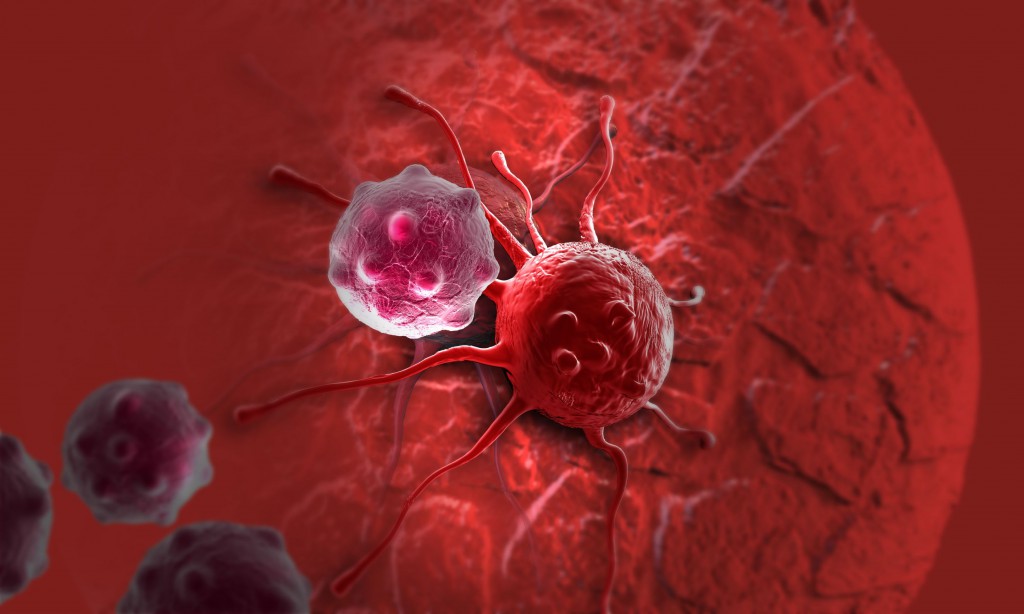
Chimeric Antigen Recepter (CAR)-T cell therapy is a personalized immunotherapy that harnesses the patient’s own immune system to combat cancer. It is done by engineering the patient’s T cells to specifically target and attack cancer cells in their body, and it has shown great success in treating various blood cancers such as leukemia.
Treating solid tumors with CAR-T cells, however, has proved much more challenging. This is mainly because solid tumors contain a heterogeneous population of cells, expressing a variety of antigens—many of which are also expressed in healthy cells. Therefore, T cells targeting solid tumors could potentially attack healthy tissue, resulting in serious side effects. In addition, solid tumors create a hostile microenvironment that is difficult for CAR-T cells to infiltrate.
Continue reading “Treating Solid Tumors: Combining CAR-T Cell Therapy with Probiotics”Promega qPCR Grant Series #3: Immunotherapy Researcher, Dr. Sabrina Alves dos Reis

In our third and final installment of the Promega qPCR Grant Recipient blog series, we highlight Dr. Sabrina Alves dos Reis, a trained immunotherapy researcher. Her work has focused on developing tools for more accessible cancer therapies using CAR-T cells. Here, we explore Dr. Alves dos Reis’ academic and scientific journeys, highlight influential mentorship and foreshadow her plans for the Promega qPCR grant funds.
Dr. Alves dos Reis’ career began with a strong affinity for biology. As an undergraduate student, she pursued a degree in biological science, where she developed a foundational understanding for designing and developing research projects. As her passion for science heightened, she decided to continue her journey in science, culminating in a PhD at the Fundação Oswaldo Cruz Institute in Rio de Janeiro, Brazil. Her research projects focused on the unexplored territory of adipose tissue as a site for Mycobacterium leprae—or leprosy bacillus—infection. She mentioned that this work piqued her curiosity for improving immunotherapies and laid the foundation for her future in cancer research.
Continue reading “Promega qPCR Grant Series #3: Immunotherapy Researcher, Dr. Sabrina Alves dos Reis “Elevate Your Research: Exploring the Power of 8-Dye STR Chemistry with the Spectrum Compact CE System
In genetic research, staying at the forefront of technology is crucial. The latest breakthrough in human identification comes in the form of 8-dye Short Tandem Repeat (STR) chemistry. This innovation promises unprecedented precision and accuracy in DNA analysis, revolutionizing the way we approach genetic studies. In this blog post, we’ll delve into the world of 8-color chemistry and explore how it seamlessly integrates with the game-changing Spectrum Compact CE System.
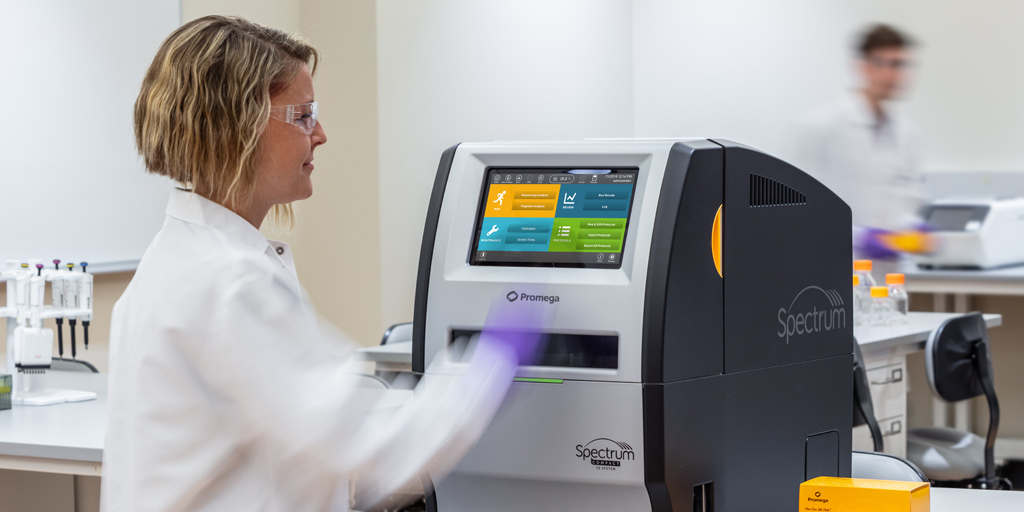
Understanding 8-Dye STR Chemistry
The introduction of 8-dye chemistry expands the capability of STR analysis, enabling researchers to analyze more DNA markers with smaller amplicons, providing more robust data from degraded or inhibited DNA samples. The performance of the 8-color dye chemistries from Promega on the Spectrum Compact CE System is sensitive, with both chemsitries (PowerPlex® 35 GY System and the upcoming PowerPlex® 18 E System) producing 100% profiles from their suggested inputs down to as little as 62.5 pg of DNA. The 18E system produced 100% profiles down to 31.25 pg of input DNA with minimal signal bleed through and low system noise.
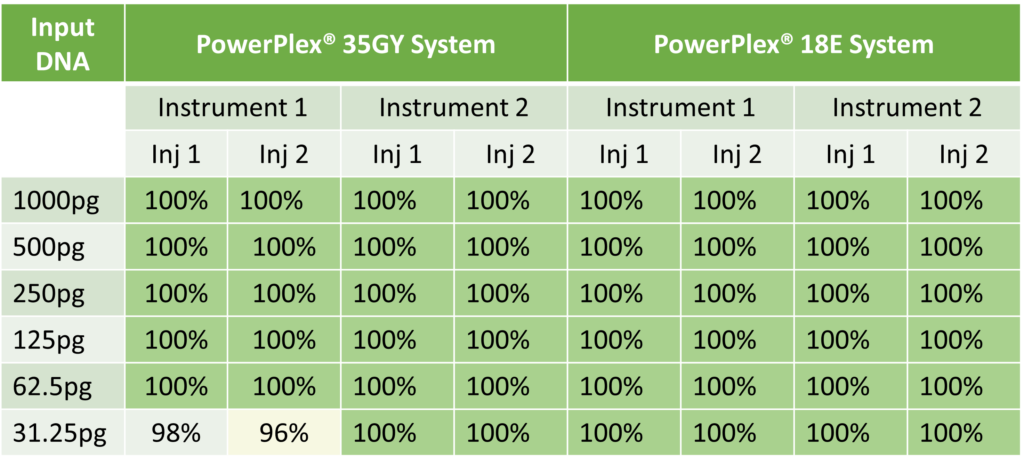
Custom in vitro Transcription Reagents for Manufacturing RNA Therapeutics

Research into vaccines based on RNA began decades ago when scientists theorized that they could harness RNA to produce viral proteins within a cell, prompting a protective immune response. RNA vaccine research drew scientists’ attention during the development of SARS-CoV-2 vaccines during the COVID-19 pandemic, which opened the door for research targeting other diseases with RNA-based therapeutics.
Continue reading “Custom in vitro Transcription Reagents for Manufacturing RNA Therapeutics”The R&D Flex Team: A Unique Research Scientist Opportunity

Sarah Mahan embraces change. In fact, she doesn’t just embrace it, she seeks it out, running towards change with arms wide open.
“If I could do a different thing every week, I would. That’s what my job would be.”
Sarah made her dream a reality when she began leading the Promega R&D Flex Team. This group of diverse research scientists moves around Kornberg Center, contributing resources to accelerate the development of technologies like Lumit Immunoassays and PowerPlex chemistry. They don’t specialize in any field or technology, but rather are constantly challenged to learn new skills quickly. Everywhere they go, they help R&D teams generate more data, answer more questions, and deliver results in less time.
“In short,” Sarah says, “we’re helping research teams make better products, faster.”
Continue reading “The R&D Flex Team: A Unique Research Scientist Opportunity”